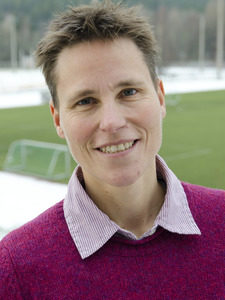[Sheree Bekker] In the lead up to the 13th Australasian Injury Prevention and Safety Promotion Conference, I invited keynote speaker Dr Kathrin Steffen to answer a few questions for our blog.
Kathrin Steffen is a senior researcher from the Oslo Sports Trauma Research Center. Kathrin also serves as a research assistant at the Department of Medical & Scientific Activities in the International Olympic Committee (IOC). She is the assistant editor for the 4 annual issues of the IOC supported journal British Journal of Sports Medicine Injury Prevention & Health Protection, in addition to being involved in other IOC driven research projects.

1. Tell us about your training and role in injury prevention
After finishing my Masters studies in Germany (German Sports University in Cologne), in the field of prevention and management of noncommunicable diseases, I moved on to Norway and the Norwegian School of Sport Sciences and the Oslo Sports Trauma Research Center, where I earned a PhD in sports injury epidemiology. Another positive addition to my development was a 1-yr post-doc exchange with the group of Prof Carolyn Emery at the Sports Injury Prevention Research Centre in Calgary. The value of an intercultural exchange cannot be stressed enough.
2. What is your research focused on, and what do you see as the issues currently facing injury prevention?
Besides my research interests in injury epidemiology and prevention in the broader sports community, I am the project leader for national and international multimedia projects to disseminate knowledge in sports medicine. At present, I am working full time with the content management for a multi-lingual “SKADEFRI/GET SET – webpage/mobile application” on injuries and injury prevention in Olympic sports.
One of the biggest challenges in our field of injury prevention seems to be is to convince people that “the pill” is good for them. As one example, we have evidence enough that structured conditioning training/neuromuscular training, focussing on sport specific injury types, will reduce the risk of injury providing training is done regularly. However, we still see a high number of injuries in the field. Having developed digital tools in corporation with coaches, athletes, and sports federations to facilitate usage of prevention exercises, we still don’t see the desired adoption of these tools. The knowledge doesn’t seem to be translated well enough, and mechanisms on how best to translate are not optimally understood.
3. How does your research Take Action?
The Oslo Sports Trauma Research Center has a special focus on the young athlete, though many of the research projects are done in elite sports. Much of the knowledge gained from elite athletes can easily be transferred to, and shared with, recreational sports. Also, we have a close contact to the National Sports Federations, and we collaborate on developing injury prevention materials to be mandatory in the coach education system. The development of multimedia tools (web and apps) helps to facilitate the usage of existing knowledge in the field. However, the validation of these tools still remains a challenge in Norway.
4. What can emerging researchers learn from you?
Don´t be afraid of leaving your group and go abroad to further develop personal and research skills.
5. What are you looking forward to when coming to Ballarat?
The ACRISP-group with their head, Prof Caroline Finch, are world leading in the field of implementation research. I’m looking forward to the exchange experiences and learning from each other, through expected cultural differences and similarities.
The call for abstracts for the 13th Australasian Injury Prevention and Safety Promotion Conference is open until the end of April 2017.